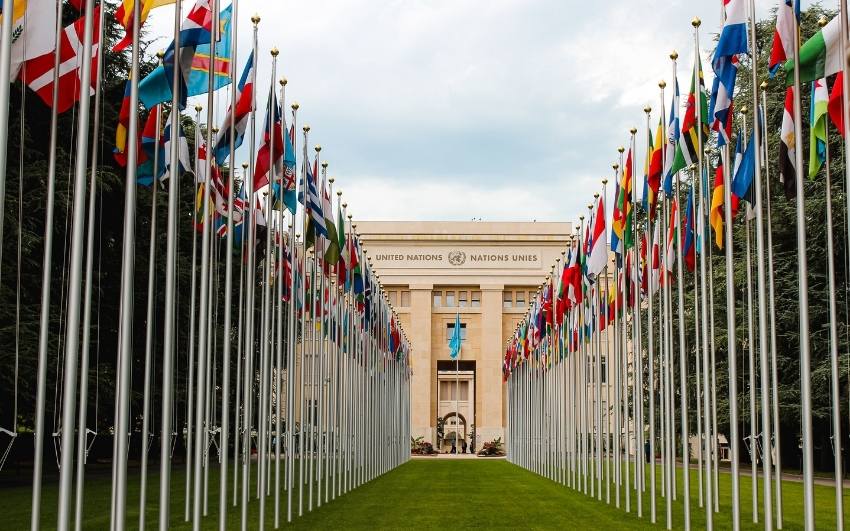
“The surest way to be happy is to seek happiness for others.”– Martin Luther King Jr.
Is it possible to quantify happiness? Yes, in a certain way, as the happiness statistics below demonstrate.
However, a lot of the research is subjective because respondents are asked how they feel or perceive life.
According to the data, happiness has a societal influence through an individual emotional exercise.
A country’s people act by one another, and happiness is a good indicator of these interactions.
On the other hand, happiness is an important measurement for assessing a country’s socio-economic and political stability and sustainability.
In this post, we’ve gathered important happiness statistics to paint the picture of where people are happiest and why both on a global and individual level.
Table of Contents
Key Facts About Happiness Statistics
- In the United States in 2004, 93.42 % of individuals claimed to be happy. It decreased to 91.08% ten years later. The subprime housing crisis erupted in 2008 at the same time as this period did
- From 1973 to 2016, the United Kingdom kept a happiness index of 85% to 95%, whereas France maintained a score of 75% to approximately 85%
- The Netherlands stayed close to the 95% mark despite significant drops in 1975 (86.18%) and 2003 (90.09%)
- The happiness gap between newcomers and locals in the United States is subtle; the country ranks 15th for immigrants and 18th for natives
- In most situations, though, the change in the happiness index is minor yet significant
Happiest Countries Statistics

The amount of money the country has per capita, how long people live, and how they are governed can all be used to assess societal happiness. Using various happiness measures, naturally, yields varying ranks, as we may see from these data:
- Nordic countries dominate the top ten happiest nations in the world. The World Happiness Report 2020 ranked all five Nordic countries as follows:
- 1) Finland;
- 2) Denmark;
- 3) Switzerland;
- 4) Iceland;
- 5) Norway:
- 6) Netherlands;
- 7) Sweden;
- 8 ) New Zealand;
- 9 ) Austria;
- 10 ) Luxembourg.
- For the third year in a row, Finland has topped the list.
- While people in major cities miss out on quality time with friends and family, the survey determined that they never do without stimulating activities. The city was named the happiest globally by a global poll of more than 90,000 respondents. It also has taken first place for Europe’s Happiest Cities. Helsinki is currently sitting atop the rankings as well.
- The United States ranks 18th, a modest improvement from its 2019 ranking of 19th, while Canada is 11th and the United Kingdom 13th on this year’s list.
- The most miserable country is Afghanistan, followed by South Sudan and Zimbabwe.
The World Happiness Report paints a very different picture when contrasted with a prior study.
- The following ten countries are the happiest in terms of ecological impact and wellbeing, according to the Happy Planet Index:
- 1) Costa Rica;
- 2) Mexico;
- 3) Colombia;
- 4) Vanuatu;
- 5) Vietnam;
- 6) Panama;
- 7) Nicaragua;
- 8) Bangladesh;
- 9) Thailand;
- 10) Ecuador.
- When calculating GPD per capita, The World Happiness Report considered GDP per capita (how well-off the population is), whereas the Happy Planet Index did not. This resulted in a significantly different list in the case of
According to this study, western nations are the most satisfied when it comes to measurable material measures. On the other hand, Latin America dominates when it comes to subjective happiness–people who are pleased with their lives. And no, we’re not talking about the World Cup here.
- However, material wealth does not guarantee happiness. Only Switzerland made it to the top 10 of the World Happiness Report, which was released by the Sustainable Development Strategy Group in late April: 1) Switzerland $564,653; 2) Hong Kong SAR $489,258; 3) US $432,365; 4) Bermuda $417,694; 5) Greenland $417 ,694; 6) Australia $386,058 ; 7 ) Iceland $380,868 ; 8 ) Luxembourg$358 ,003 9 ) New Zealand$304 ,124 10)”Singapore”297 ,873).
According to the World Happiness Report, Nordic nations are regularly among the happiest countries for the following reasons: extensive social benefits, low corruption, effective democracy, and competent state institutions. The notion of “Nordic Exceptionalism,” as the report terms it, reminds us of another study from these countries, which rank highly in income inequality reduction: dedication to reducing income disparities.
- The country’s commitment to reducing the income gap, as measured by the inequality index: 1) Sweden; 2) Belgium; 3) Denmark; 4) Norway; 5) Germany; 6) Finland; 7) Austria; 8) France (8); 9 ) Netherlands (9); 10 )Luxembourg.
- The United States placed 23rd in the inequality index, which somewhat mirrored its position as one of the least happy countries in the world.
While wealth is a signal, its distribution appears to be the key to happiness. People in Nordic countries are happy with how much they have, not how much they have compared to others. It should not surprise that the happiest nations are stable democracies dedicated to economic equality.
Happiness Across Time Statistics

Happiness is never constant. Our life experiences change over time, influenced by government, the environment, urban-rural migration, and personal views.
- The increases are enormous in certain situations. For example, Zimbabwe’s happiness increased by 56.4 % from 2004 to 2012, before declining to 82.1 %. Zimbabwe had one of the fastest economic booms during this period, with a rate of 12% growth between 2009 and 2013, which may explain the increase.
- In most situations, though, the change in the happiness index is minor yet significant. In the United States in 2004, 93.42 % of individuals claimed to be happy. It decreased to 91.08% ten years later. The subprime housing crisis erupted in 2008 at the same time as this period did.
According to third research, although changes over time define happiness, a “happy” nation typically maintains a positive perspective over time. Despite short-term fluctuations in the happiness meter, political, economic, and social stability keeps the graph for these countries straight.
- From 1973 to 2016, the United Kingdom kept a happiness index of 85% to 95%, whereas France maintained a score of 75% to approximately 85%. The Netherlands stayed close to the 95% mark despite significant drops in 1975 (86.18%) and 2003 (90.09%).
We can infer that happiness is a transgenerational trait, with parents passing on their good attitude to their children if we look at the statistics above.
The Happiness of Immigrants Statistics

Research has focused on native-born citizens when determining the happiest nations. Immigrants make up a sizable portion of the population. To give you an idea, consider this:
- More than a third of Australia’s population comprises immigrants (37.5 %), which is the third-largest immigrant group behind the United States and Canada. The following are the top ten countries by %age of host country population:
- 1) UAE (87.3%);
- 2) Saudi Arabia (34.1%);
- 3) Australia (28.2%);
- 4) Canada (21.0%),
- 5) the US (15.1%),
- 6) the UK (12.9%),
- 7) Spain (12.7%),
- 8) Germany comes in at number 8 with 12.5%).
- 9) Ukraine ranks #10, with 11%.
According to the World Happiness Report, immigrants are as happy as people who were born and raised in the same country. There are, however, some variances.
- In a different study, the U.N. Inter-agency Group for Sustainable Development examined data on 117 countries over 5 years and found that nationals of Denmark ranked first by a significant margin (a difference of 10 points), while people from Croatia were last. Other nations with huge disparities between immigrants’ and locals’ happiness include Australia (6th vs. 10th), Switzerland (9th vs. 5th), and the Netherlands (11th vs. 6th).
- The happiness gap between newcomers and locals in the United States is subtle; the country ranks 15th for immigrants and 18th for natives.
- 1) Finland (1st vs. 1st); 2) Denmark (2nd vs. 3rd), 3) Norway (3rd vs. 2nd), 4) Iceland (4th vs. 4th), 5) Canada (7th vs. 7th), 6) Sweden (8th vs. 9th), 7 ) Israel, and Ireland are the countries with the least difference in happiness levels between immigrants and locals, respectively, at 13% of GDP or less).
Personal Happiness Statistics

Let’s look at happiness from a personal perspective on the macro level.
- According to a Gallup poll, people who socialize for 6-7 hours each day have the greatest level of happiness.
- The minimum requirement for friends to affect your happiness level is 10 times per month of direct interaction.
- Money is happiness, at least until you reach $75,000 per year. The ceiling that puts the widest grin on the average Joe and Jane’s face is $75,000. No surprise there; those who make less money have a harder time in life.
- If you have to be scientific, you are in control of your happiness or at least 40% of it. According to researchers, a large part of your pleasure is out of your hands, incorporating genetics, other people’s actions, and life events.
- On average, you are at your happiest between the ages of 33 and 77. You’re 33 because you have the energy and knowledge to pursue your calling, 55 because you’ve amassed enough assets and authority, and 70s because you’re free of many stress-causing obligations. You may look back on your life’s accomplishments in your seventies.
Happiness and Technology Statistics

The data above illustrate that happiness is related to one’s progress in life. People in wealthy nations are generally happier than those in developing countries. We wish to determine how technology affects our level of happiness as a society by comparing it with our level of happiness as individuals.
- According to the 2018 Edelman Trust Barometer, Indians were the most enthusiastic about technological progress, with 65 % of respondents answering yes. They are followed by:
- 2) Malaysians (49.6%);
- 3) Americans (43%);
- 4) Italians (42.2%),
- 5) Singaporeans (40.6%),
- 6) French (34.2%),
- 7) South Koreans (33.8%),
- 8 ) English (25.6%),
- 9) Germans n(24). and
- 10) Japanesen(11%).
- According to a Pew Research Center survey conducted much earlier, 90% of Americans believe the Internet has been good for them.
- Overall, over two-thirds of Internet users (69%) feel that people on the web are generally good to one another.
- According to a recent Pew Research poll, three-quarters of Americans have engaged in or will engage in acts of kindness for others. People also lent their time and expertise to causes. Half of those polled said they’ve seen people band together to assist someone or a cause.
- People who communicate with family and friends through digital media are more connected to them. This increase in connection is also associated with greater satisfaction in the relationships, according to a separate study by researchers at Indiana University and Universidad de Concepción (Chile). In other words, people that use digital technologies are significantly more involved in their social lives than those who don’t.
- According to a Gallup World Poll, people are most satisfied when they have both a mobile phone and access to the Internet. People with both a mobile phone and internet connection scored 5.92 on a scale of 0 to 10, which was deemed the best result. People with no mobile phone or internet access had a happiness score of 4.59, compared to those who have both and are “connected.” People without access to either were even happier (4.59), as opposed to people with neither (4.64)
We understand, nevertheless, how social media encourages the reverse. It allows for cyberbullying and online jealousy to thrive.
- According to a recent CDC study, 15% of American high school students had been harassed online or via text message in the previous year.
- Meanwhile, researchers at Bradley University, the University of Missouri Columbia, and Nanyang Technological University discovered that excessive use of Facebook might result in sadness or what they termed “Facebook envy” for seeing how successful their friends are in society.
- According to research published in the American Journal of Epidemiology, Facebook use was linked to a 5%-8% reduction in self-reported mental health.
Happiness is Not Carpentry Work
The data presented above suggest clear patterns that bring people joy.
We may infer that wealthy individuals and nations are generally happier than the poor. Income and life satisfaction, for example, provide a solid basis for our collective or individual happiness.
Of course, statistics can’t interpolate emotions.
To begin with, our conclusion contradicts the truth in the U.S. scenario. It’s a country with rich political and social processes that provide individuals, both natives, and immigrants, with one of the greatest paths to achieving their life satisfaction, known as the American Dream.
The United States, on the other hand, ranks third for opioid addiction and second for drug abuse and amphetamines.
Addiction has been linked to a downward psychological fall followed by sadness, which is the opposite of our subject.
These statistics may assist us in developing policies and understanding our perceptions and preferences, but they also show that happiness isn’t a carpentry job we can put together.
Happiness is an artwork based on our profound feelings interpreted according to our ideas that no science can contain.
References:
- Happify
- World Happiness Report<
- Lifehack Happiness Report<
- Harvard Health and happiness facts<
- Tracking Happiness<
- World Happiness Report 2020
- Happy Planet Index ranking of countries that offer the happiest and most sustainable lives to their people 2016
- Top countries with the highest average wealth per adult in 2019
- Which countries are the most (and least) committed to reducing inequality?
- World Value Survey
- Eurobarometer
- Where Immigrants are Happiest
- Social Time Crucial to Daily Emotional Well-Being in the U.S.
- A wide circle of friends is key to mid-life well-being for both sexes
- Money & Your Happiness
- Can We Change How Happy We Are—for Good?
- Happiness by the Numbers: 8 Stats That Could Change Your Life
- The growing influence of online tech and its impact on people’s lives worldwide 2018

Petri Maatta is a photographer, filmmaker, and webdesigner who has been working for over 20 years in the creative industry. Fascinated by manifesting for business reasons, Petri was determined to find out what it took to create success. He started his career with seven years of business failures before he found success by learning about manifesting from a mentor with a Fortune 500 company. Today Petri shares his knowledge through DreamMaker courses designed to help people change their businesses and lives while living on their terms.
STAY IN THE LOOP
Subscribe to our free newsletter.
Stay up to date! Get all the latest & greatest posts delivered straight to your inbox


